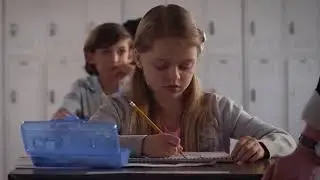Using Rules to Create Number Patterns | 5.OA.B.3 💛💙
In this short math video we will answer a four part standardized math test question using rules to create number patterns. Part A asks us to write the first four terms of pattern x. We will use the starting number value and the rule to continue and form the pattern. Part B will ask us to write the first four terms of patter y given the starting value and the rule. We will use the rule to write the first four numbers in the pattern. For part C, we will use the corresponding terms in both sequences to write ordered pairs to represent the two number patterns. In part D, we will graph the ordered pairs on a coordinate plane. We will review how to graph a point by going right on the x axis for the x coordinate and then up the y axis for the y coordinate. An exemplar solution is modeled and explained.
#numberpatterns
#orderedpairs
#coordinateplane
Website: www.magicofmath1.com
TPT Resources: https://www.teacherspayteachers.com/S...
Complete List of Warm Ups/Do Nows/Starters/Test Review by Common Core Math Standard. Make a COPY for yourself and sort by grade level, standard, or video title. https://docs.google.com/spreadsheets/...
00:00 Introduction
00:09 Part A - The Question
00:34 Understanding Part A
00:50 Using a Rule to Write a Pattern - Add
01:23 Part B - The Question
01:44 Understanding Part B
01:58 Using a Rule to Write a Pattern - Subtract
02:29 Part C - The Question
02:46 Understanding Part C
03:02 How to Write an Ordered Pair
03:48 Part D - The Question
04:02 Understanding Part D
04:09 How to Graph an Ordered Pair
Common Core Math Standard
Analyze patterns and relationships.
5.OA.B.3 Generate two numerical patterns using two given rules. Identify apparent relationships between corresponding terms. Form ordered pairs consisting of corresponding terms from the two patterns, and graph the ordered pairs on a coordinate plane. For example, given the rule "Add 3" and the starting number 0, and given the rule "Add 6" and the starting number 0, generate terms in the resulting sequences, and observe that the terms in one sequence are twice the corresponding terms in the other sequence. Explain informally why this is so.







